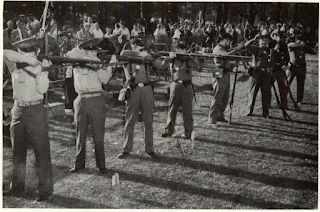Such confusion over gunshot injuries remained a
Russian PPSH-41 submachine guns were in great use
The death tolls from these insignificant-appearing
The small bullet at velocities around 4,000 feet per
The presence of this cavity, and its form, was explained by the hydraulic nature of the mechanical damage being wrought by the bullet. Perhaps if hydraulic
Russian PPSH-41 submachine guns were in great use
The death tolls from these insignificant-appearing
The small bullet at velocities around 4,000 feet per
The presence of this cavity, and its form, was explained by the hydraulic nature of the mechanical damage being wrought by the bullet. Perhaps if hydraulic

Comments
Post a Comment